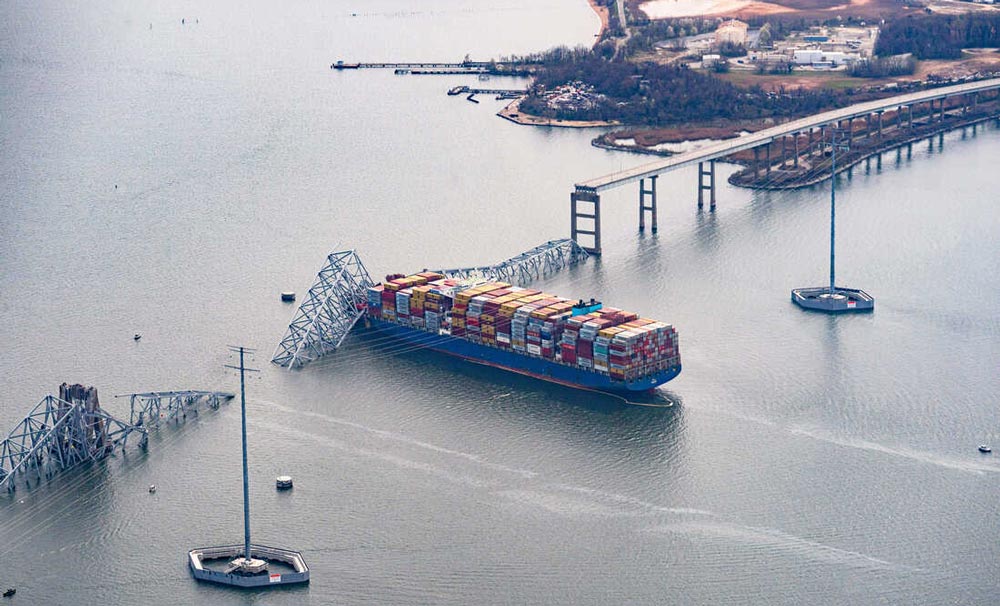In a devastating incident that unfolded in Baltimore, the collapse of a major bridge has resulted in significant challenges for shippers and logistics companies. The aftermath of the bridge collapse has left shippers scrambling to retrieve their cargo, with some carriers invoking force majeure clauses, shifting the responsibility onto the affected parties. The incident has raised concerns about the timely movement of goods, potential port penalties, and the overall impact on supply chains. Let’s delve into the details of this crisis and its ramifications for the shipping industry.
The Bridge Collapse and its Implications
The Baltimore bridge collapse occurred when the 10,000-container capacity containership Dali crashed into the Francis Scott Key Bridge. The tragic incident has disrupted the normal flow of trade through the Port of Baltimore, one of the busiest ports in the United States. As a result, ocean carriers have declared force majeure, freeing themselves from the obligation to transport cargo to its intended destination.
Force majeure is a contractual provision that releases parties from their obligations due to unforeseen circumstances beyond their control. In this case, shippers, including U.S. retailers, have been informed that once their cargo is diverted to alternate ports, it becomes their responsibility to arrange for its pickup. This sudden shift in responsibility has left logistics companies and shippers grappling with the challenge of tracking diverted shipments and obtaining crucial information from container vessel companies.
Challenges Faced by Shippers and Logistics Companies
One of the critical issues faced by logistics companies is the lack of prompt updates from ocean carriers regarding vessel transits. The delayed information regarding the new diverted ports hampers logistics planning, potentially leading to container late fees (detention and demurrage) if containers are not picked up promptly. Shippers are concerned about the urgency of retrieving their cargo and avoiding additional charges.
The urgency to pick up diverted containers has heightened as ocean carriers declare force majeure once the containers arrive at the alternate ports. This has put pressure on companies importing goods to find suitable transportation options to move their cargo swiftly. Failure to do so within the allocated free time may result in detention and demurrage fees. The situation calls for coordination between logistics providers, shippers, and port terminals to ensure smooth operations and avoid undue financial burdens.
Impact on Supply Chains and Industries
The Port of Baltimore plays a crucial role in various industries, such as automotive, agriculture, and construction. It ranks first in the United States for auto/light truck and agriculture tractor imports and exports. The bridge collapse has disrupted supply chains, affecting major wood panel importers and construction-related businesses heavily reliant on the port. The implications of this crisis reach far beyond delayed shipments, potentially impacting contractors, construction projects, and the overall economy.
Efforts to Navigate the Crisis
To address supply chain disruptions during crises, the U.S. Department of Transportation created the Freight Logistics Optimizations Works (FLOW), a digital platform for supply chain monitoring. FLOW facilitates real-time data analysis, enabling participants to monitor port congestion and track cargo shifts caused by unforeseen events. Retailers, railroads, and logistics providers have joined the platform, enhancing collaboration and providing insights to mitigate the impact of such incidents.











